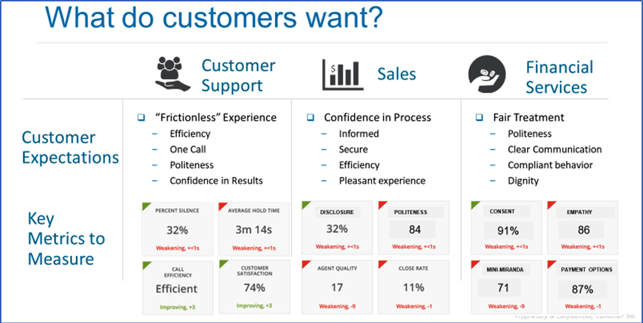CX Network looks at two data mistakes that hinder customer experiences: Data silos and the big data myth.
It is a fact of business that poor data practices have the ability to do real damage to customer relationships. After all, as Emmanuel Obadia , VP of Marketing at Oracle, states: “Data is the foundation upon which you can build the entire customer experience (CX) effort. It’s blood to CX. If you don’t have data, you can’t go anywhere.”
When customer data resides in several isolated pockets in a portfolio, the conflicted customer view can trip up multiplay providers when they attempt to identify a customer across multiple lines of a business. If a brand fails to recognise that a customer is simultaneously subscribed to various products they could send communications that are anything but targeted: For instance, sending a customer an enticing offer for a product they already have at a lower price point than they paid for it. During a time where people expect convenience and personalisation, this sort of insulting mistake can do real damage to a customer’s perception of a brand and even push them to switch to a competitor company.
It’s not just a lack of data integration that can be harmful; too much integration can be damaging when you have several groups in a company capturing data. Flimsy governance procedures could result in customers suffering from “creepy” experiences where they are unsettled by unexpected preemptive actions. This can occur when data is borrowed or cross-referenced between divisions in a company. Safeguarding procedures are needed to ensure that customers retain control.
Poor data practices like these will hold companies back from progressing to providing sophisticated predictive customer experiences. A truly unified view of customer data is integral to unleashing the power of artificial intelligence (AI), or more specifically, machine learning in a compliant manner.
In this article we look at two data mistakes that are hindering customer experiences: Data silos and the big data myth.
Data silos
Data silos were labelled as the top customer experience challenge by CX Network members in our latest research. Many organisations across the world struggle to bring innovation into their businesses because of legacy systems. A lack of interoperability between systems results in data being trapped within individual sections of the tech stack. This forces companies to compromise on the quality of the end product and experience due to antiquated (but well-embedded) technology. Despite it being a tall challenge, especially in larger companies, it is a mistake for brands to ignore the value of breaking down data silos.
How to overcome silos
Betty Chuah, senior manager of EMEA retailer consumer insights at Volvo Cars, notes the importance of having a global CX team with the global responsibility to govern the CX vision and battle silos.
“In many companies the IT department was founded many years ago to handle all the information from customers and today they are in separate departments,” she explains. “I [have] seen some companies have combined digital and customer experience departments and are striving towards having one customer dataset to have the complete customer journey map out and control all the data.”
Darya Vselubsky customer success manager at travel software start-up Triptease, agrees that transparency is vital to defeating data silos and innovation blocks.
“Transparency is the key to overcoming any data silos and listening to the customer needs,” Vselubsky remarks. “Customer success teams in general are really crucial as they’re the glue that will connect customers to data to product.
“Product teams may have an idea of customer needs and some of the things that they can do with data. But unless there is transparent communication, which is of course nurtured by customer success teams, there will be misunderstandings that could lead to product development that’s not easy to use or necessary, which will lead to churn and product failure.”
Overcoming silos
In the eyes of James Alexander, Decisioning Director at London based media company Sky, the key to enhancing the digital customer experience for connected customers starts around the concept of identity, gluing together all the different interactions as much as possible into an actionable profile.
Alexander explains: “First of all, it allows you to get much better visibility of what’s going on with your customers. In particular, how they interact with you on your websites, your apps, your call centre and other channels across all of those silos in the organisation. Combining this with key bits of core customer data provides an incredibly rich asset that allows you to really understand your customers.
“Typically, as you integrate the data and marketing technologies to construct the customer profile, it also allows you to go in the other direction and execute a tailored experience at the individual account level.”
Big data myth
Another data mistake that causes fragmented experiences is the misconception that quantity is more important than quality. ‘Big data’ as a phrase isn’t as prevalent as it was a few years ago. As mentioned by CX expert Shep Hyken in The Big Book of Customer Insight, Data and Analytics 2018: “Big data is really another way of saying too much data, and when you have too much it gets confusing.” In fact Sherif Mityas, Chief Experience Officer at TGI Fridays, believes the quantity-over-quality viewpoint is perhaps the biggest data mistake a company can make.
Mityas says: “The biggest mistake is thinking you need to have all the data. When we first started TGI Fridays, everyone told us: ‘You have to collect all the data, create the data links and put all the data into one system.’ There was the assumption that more data was better, but this is false. More data is just more noise; it’s not relevant and it’s expensive.
“Instead, it’s about collecting the right data, the data that will create a difference in the action you want to deliver. Data that will inform your AI tools to create a better, relevant and more personalised message.”
A blind focus on data quantity over quality could have damaging results when it comes to AI. Thierry Derungs, Chief Digital Officer at BNP Paribas Wealth Management, acknowledges that AI is always starving for data and “its hunger is gastronomic”, but he maintains that data quality is still compulsory.
“[The classic phrase is] garbage in = garbage out, but with AI it is even stronger because it’s garbage in = total mess out,” remarks Derungs. “You really need to understand what your intelligence is doing, especially if you have machine learning or deep learning. If you cannot be sure that your data at the entry is of the top quality, then understanding what your intelligence is indicating or building as a model will be very difficult.”
The power of data quality over quantity
Shep Hyken notes that the best people in marketing analytics will be aware that they only need a few select, but crucial, pieces of data to complete their objectives.
“You’ve got to look at who are we going after and what data is important, and recognise that you can’t be all things to all people,” Hyken explains.
“Systems today are more powerful than ever and have made it easier than ever to understand your different customer segments,” he adds. “Most companies typically have four to six main types of customers. When you understand what those four to six are, then you recognise you don’t need to be everything to everybody, but be as much as you can to those four to six groups of customers and split them up, market to them appropriately and service them appropriately.”
Interested in conquering your data mistakes? Join hundreds of other CX practitioners at CXN Live: Customer Insights and Analytics for exclusive data strategies from the likes of Paypal, TGI Fridays and start-up Triptease.





 About the Author
About the Author

 About the Author
About the Author
 About the Author
About the Author




 About the Author:
About the Author:
 About the Author
About the Author
 About the Author
About the Author